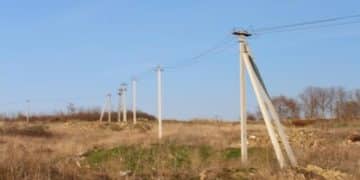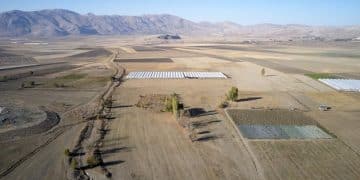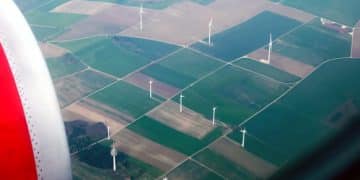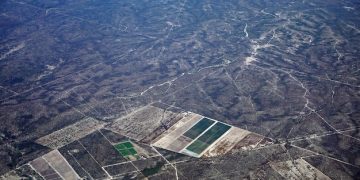US Energy Consumption Trends: Market Implications & Analysis
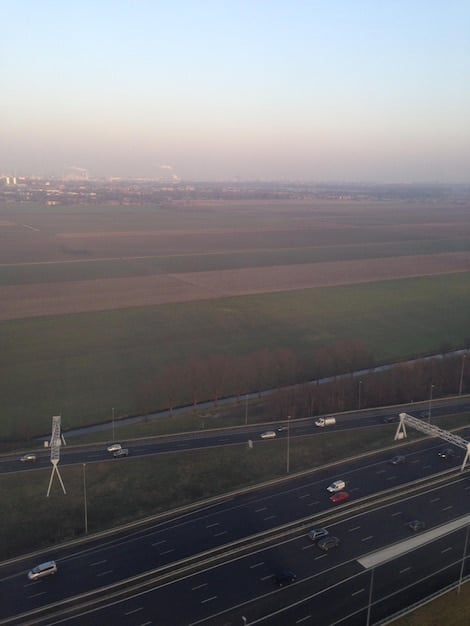
The latest trends in energy consumption patterns in the US reveal a shift towards renewable energy sources, increased energy efficiency, and electrification of various sectors, significantly impacting the energy market by driving innovation and altering traditional business models.
The landscape of energy consumption in the United States is undergoing a significant transformation. Understanding what are the latest trends in energy consumption patterns in the US and their implications for the energy market is crucial for businesses, policymakers, and consumers alike. Let’s delve into these changes and their profound effects.
Understanding US Energy Consumption Patterns
Energy consumption patterns in the US are influenced by a multitude of factors, including economic growth, technological advancements, and environmental concerns. This section will explore these factors and delve into the current state of energy use across different sectors.
The need to understand these patterns has become critically important, especially with rising awareness about climate change and the push for sustainable energy solutions. Analyzing these trends gives stakeholders valuable insights into making informed decisions and strategic investments.
Key Drivers of Energy Consumption
Several key factors drive energy consumption patterns in the United States. These drivers shape how energy is used across various sectors, influencing the overall energy market.
- Economic Growth: A robust economy typically leads to increased industrial production, transportation, and commercial activities, all of which demand more energy.
- Technological Advancements: Innovations in technology can either increase or decrease energy consumption. For example, more efficient appliances reduce energy use, while the proliferation of data centers increases it.
- Population Growth: An expanding population inherently requires more energy for residential and commercial purposes.
- Climate and Weather: Seasonal changes and extreme weather events can significantly impact energy demand for heating and cooling.
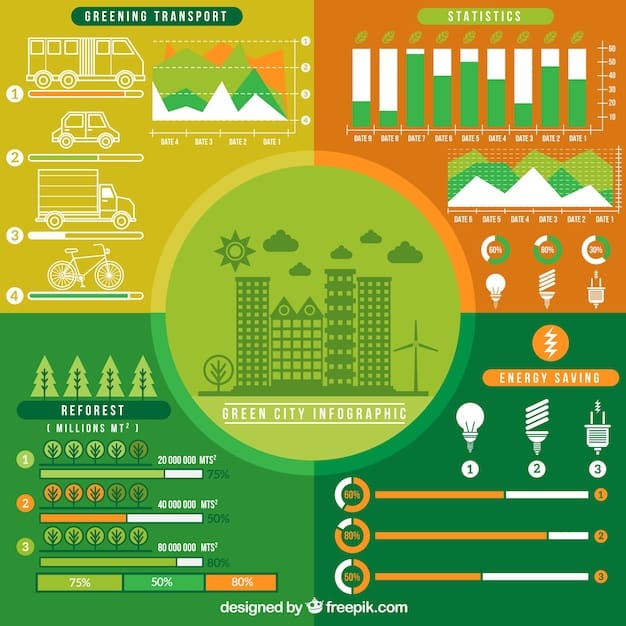
Understanding these drivers helps stakeholders forecast future energy needs and implement policies that promote efficient and sustainable energy use. By adapting to these factors, the US can better manage its energy resources and reduce its environmental impact.
Shift Towards Renewable Energy Sources
A significant trend in US energy consumption is the growing adoption of renewable energy sources. This shift is driven by environmental concerns, technological advances, and decreasing costs of renewable energy technologies. This section explores the rise of renewables and their impact on the energy market.
As the cost of renewables continues to decline and concerns about climate change intensify, the transition to renewable energy is becoming increasingly inevitable. This transition has significant implications for the energy market, influencing investment decisions and shaping future energy policies.
Growth of Solar and Wind Power
Solar and wind power have experienced remarkable growth in recent years, becoming increasingly competitive with traditional fossil fuels.
- Rapid Cost Reduction: The cost of solar and wind energy has plummeted, making them economically viable options for both residential and commercial consumers.
- Government Incentives: Federal and state incentives, such as tax credits and rebates, have further accelerated the adoption of these renewable sources.
- Technological Improvements: Advancements in solar panel efficiency and wind turbine technology have enhanced their performance and reliability.
- Increased Capacity: Utility-scale solar and wind farms are being developed across the country, adding significant renewable energy capacity to the grid.
The rise of solar and wind power is reshaping the energy market, leading to a more decentralized and sustainable energy system. As these technologies continue to mature, their role in meeting the nation’s energy needs will only increase.
Electrification of Various Sectors
Electrification, the process of replacing fossil fuels with electricity in sectors like transportation, heating, and industry, is another key trend. This shift is aimed at reducing greenhouse gas emissions and improving energy efficiency.
Electrification is seen as a critical strategy for decarbonizing the US economy. By switching to electricity generated from renewable sources, various sectors can significantly reduce their carbon footprint and contribute to a cleaner environment.
Electric Vehicles and Their Impact
The increasing adoption of electric vehicles (EVs) is a prime example of electrification. As EVs become more affordable and charging infrastructure expands, their impact on the energy market grows.
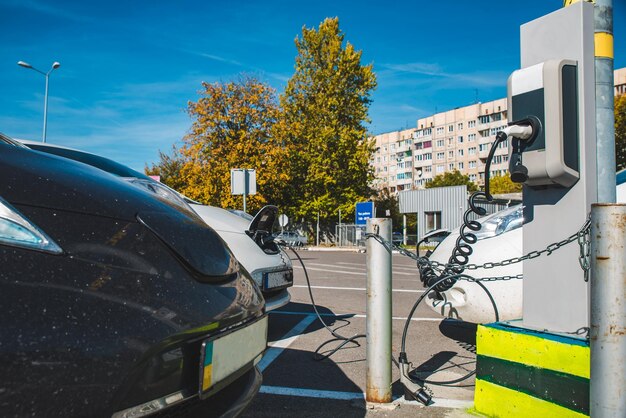
- Rising EV Sales: EV sales have been steadily increasing, driven by consumer demand for cleaner and more efficient transportation options.
- Charging Infrastructure: Investments in charging infrastructure are crucial to support the widespread adoption of EVs.
- Grid Modernization: The integration of EVs requires a modernized grid capable of handling increased electricity demand and managing charging loads.
- Battery Technology: Advancements in battery technology are improving the range, performance, and affordability of EVs.
The electrification of transportation is not just about cars; it also includes buses, trucks, and even aviation. Each sector presents unique challenges and opportunities, but the overall trend toward electrification is clear.
Energy Efficiency Improvements
Energy efficiency measures are playing a crucial role in reducing overall energy consumption in the US. These improvements span across various sectors, including residential, commercial, and industrial.
Energy efficiency is often the most cost-effective way to reduce energy consumption and greenhouse gas emissions. By using less energy to accomplish the same tasks, businesses and consumers can save money and reduce their environmental impact.
Advancements in Smart Grid Technologies
The development and deployment of smart grid technologies are transforming the way energy is distributed and managed. Smart grids use digital technology to improve the reliability, efficiency, and security of the electricity grid.
Smart grids are essential for integrating renewable energy sources, managing distributed generation, and enabling demand response programs. These technologies are paving the way for a more resilient and sustainable energy system.
Benefits of Smart Grids
Smart grid technologies offer numerous benefits, including:
- Enhanced Reliability: Smart grids can detect and respond to disruptions more quickly, reducing the frequency and duration of power outages.
- Improved Efficiency: Smart meters and advanced sensors provide real-time data on energy consumption, allowing utilities to optimize grid operations and reduce energy losses.
- Integration of Renewables: Smart grids can accommodate intermittent renewable energy sources, such as solar and wind, more effectively.
- Demand Response: Smart grids enable demand response programs, which incentivize consumers to reduce their energy consumption during peak demand periods.
The ongoing development and deployment of smart grid technologies are crucial for building a modern and sustainable energy infrastructure in the US.
Policy and Regulatory Landscape
Government policies and regulations play a significant role in shaping energy consumption patterns and influencing the energy market. These policies can create incentives for renewable energy adoption, promote energy efficiency, and regulate emissions.
Understanding the policy and regulatory landscape is essential for businesses and investors in the energy sector. Government actions can have a profound impact on market trends and investment decisions.
| Key Trend | Brief Description |
|---|---|
| ☀️ Renewable Growth | Increased use of solar and wind power due to lower costs and incentives. |
| ⚡ Electrification | Switching to electricity in transport, heating, and industry to cut emissions. |
| 💡 Energy Efficiency | Using less energy with efficient appliances and building designs. |
| 🌐 Smart Grids | Improved grid reliability and renewable integration via smart technologies. |
Frequently Asked Questions (FAQ)
▼
The shift is propelled by declining costs of renewables, government incentives, environmental concerns, and technological advancements, making them competitive with traditional sources.
▼
Electrification is creating new demands for electricity, particularly in transportation and heating, requiring grid modernization and integration of more renewable sources.
▼
Energy efficiency reduces energy consumption, lowers costs for consumers and businesses, and decreases greenhouse gas emissions, contributing to a more sustainable environment.
▼
Smart grids improve reliability, efficiency, and security by using digital technology to monitor and manage energy flow, enabling better integration of renewable energy sources.
▼
Government policies provide incentives for renewable energy, regulate emissions, and promote energy efficiency, significantly shaping energy consumption and market trends in the US.
Conclusion
Understanding the latest trends in energy consumption patterns in the US and their implications for the energy market is crucial for making informed decisions and paving the way for a sustainable energy future. The shift towards renewable energy, electrification, energy efficiency, and smart grid technologies are reshaping the energy landscape, offering both challenges and opportunities for businesses, policymakers, and consumers alike.
